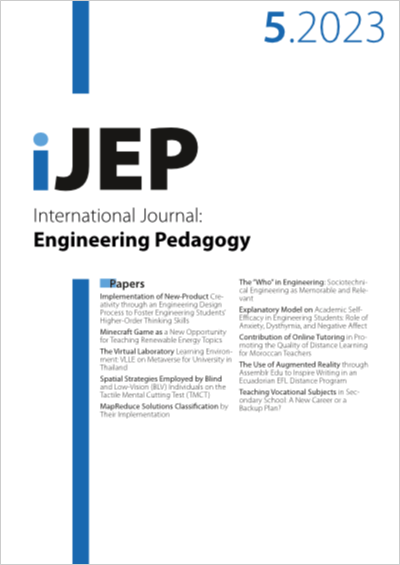Spatial Strategies Employed by Blind and Low-Vision (BLV) Individuals on the Tactile Mental Cutting Test (TMCT)
DOI:
https://doi.org/10.3991/ijep.v13i5.38021Keywords:
Spatial Strategies, Spatial Ability, Spatial Cognition, Blind and Low VisionAbstract
Spatial ability is a well-known predictor of success in science, technology, engineering, and mathematics (STEM) fields. The purpose of this study was to investigate and understand the spatial strategies that were used by blind and low-vision (BLV) individuals as they solved problems on the tactile mental cutting test (TMCT), an instrument that was designed to measure the spatial ability of BLV audiences. The TMCT is an accessible adaptation of the older, 1938 version of the mental cutting test (MCT) that has been used extensively in spatial ability research. Additionally, this paper seeks to compare these strategies with existing strategies that have been investigated with sighted populations. The BLV community is underrepresented in engineering and in spatial ability research. By understanding how BLV students understand and solve spatial problems and concepts, educators can develop and enhance educational content that is relevant to this population. By incorporating perspectives from the BLV community and making STEM curricula accessible to this population, more BLV individuals may be encouraged to pursue STEM or engineering career pathways.
Downloads
Published
How to Cite
Issue
Section
License
Copyright (c) 2023 Dr. Theresa Green, Dr. Wade H. Goodridge, Daniel Kane, Dr. Natalie Shaheen

This work is licensed under a Creative Commons Attribution 4.0 International License.



